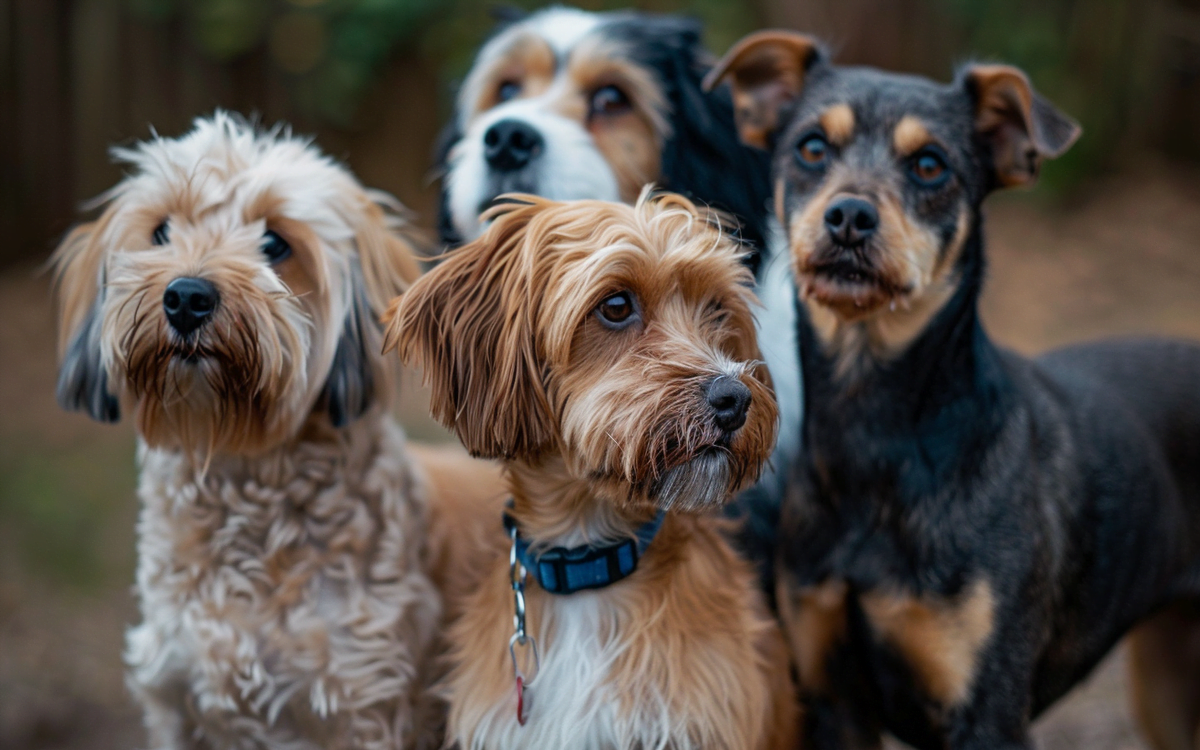In 2023, a distressing announcement revealed that 21 different animal species were removed from the Endangered Species Act, having been officially declared extinct. This alarming development is indicative of a broader trend where human activity is accelerating the extinction rate of numerous species. Such stark realities have led to growing concerns over the possibility of even our most cherished companions, dogs, facing extinction. The thought of dogs disappearing from our lives, much like the fate of the Dodo bird, is a chilling prospect for many.
However, is such a scenario plausible? The likelihood of dogs going extinct is minimal. History shows that very few animals deeply integrated into human society have ever disappeared. With robust populations of both wild and domestic dogs, coupled with ongoing efforts to breed and preserve these populations, the extinction of dogs as a species seems highly improbable. Nonetheless, while dogs as a whole may not face extinction, it is possible for specific dog breeds to die out.
Introduction
You know that feeling when you see an old photo? Maybe one of your childhood dog, or a painting of a noble-looking hunting breed? There’s just something about dogs that makes you feel connected, even across time. But have you ever wondered if those vanished breeds are truly gone?
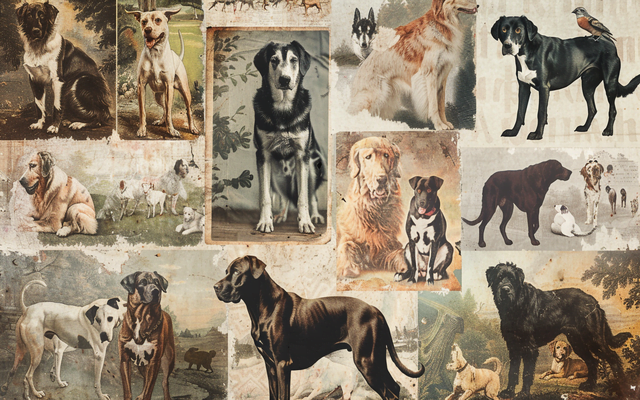
Could Dogs as a Species Disappear?
You might see news about endangered animals and worry that our furry friends could be next. Luckily, dogs have some major things going for them:
- BFFs with Humans: We’ve been tight with dogs for thousands of years! They help us, we help them – it’s a pretty sweet deal.
- Amazing Adapters: From Chihuahuas to Great Danes, dogs come in all shapes and sizes. This means they can thrive in tons of different environments.
- Puppy Power: Dogs have lots of babies (yay, puppy cuteness!). Big populations make them less likely to be wiped out by something unexpected.
Of course, it’s not impossible. Stuff like massive natural disasters or diseases could be a threat. But the point is, our canine companions are pretty resilient, especially with humans in their corner.
Why Specific Dog Breeds Go Extinct
- Losing Their Purpose: Imagine a dog bred for hundreds of years to hunt a specific animal that’s now protected. Sadly, sometimes those amazing skills aren’t needed anymore. For instance, the Talbot Hound was a famous scent hound in medieval times, but changing hunting practices led to its extinction. Or the Hawaiian Poi Dog has been extinct for a long time due to Natural disruption
- Health Problems: We love our purebred pups, but sometimes too much focus on looks can lead to trouble. Inbreeding (breeding closely related dogs) can cause serious health problems. If a breed has a small population and lots of genetic issues, that’s a recipe for disaster.
- Changing Fashions: Dog breeds can be trendy, just like fashion! Once popular breeds might fall out of favor, and fewer people breed them. If a breed’s numbers get too low, it’s hard to make a comeback. The English White Terrier is a sad example – these feisty cuties were all the rage in the 1800s but almost vanished later on.
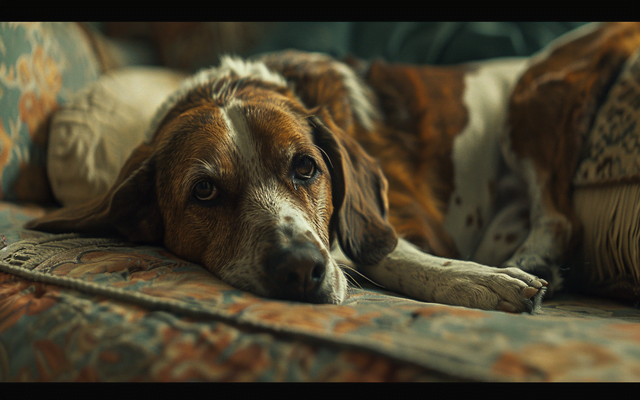
Efforts to Preserve Endangered Dog Breeds
The good news is, there are tons of dog lovers fighting to protect endangered breeds! Here are some of the heroes:
- Breed Clubs: Folks passionate about specific breeds work to keep them healthy and popular. They set standards, track pedigrees, and educate people about why their breed is so awesome.
- Genetic Preservation: Think of it as a doggy DNA time capsule! Scientists can save genetic material to help boost diversity in the future.
- Awareness and Adoption: Learning about endangered breeds is the first step! Shelters sometimes have rare mixed-breed pups or purebreds in need of homes.
- Success Stories: The Cesky Terrier was down to a few dogs in the 1950s. Thanks to dedicated breeders, they’re thriving today!
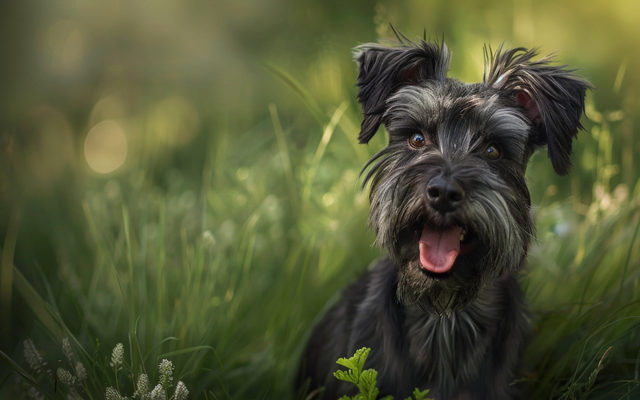
The Importance of Canine Diversity
You might think all dogs are basically the same – four legs, tail, loves belly rubs. But each breed (and every amazing mixed-breed doggo!) brings something unique to the table:
- The Genetic Treasure Chest: Even pups that look wildly different share a lot of DNA. But small variations can mean a breed is better at sniffing out trouble, exceptionally gentle with kids, or amazingly resistant to disease. We might not know what awesome traits we’ll need in the future!
- It’s a Cultural Thing: Dogs have been part of human societies for centuries. Some breeds, like the Tibetan Mastiff, are tied to specific places and traditions. Losing a breed is like losing a piece of history.
- The Perfect Match: Want a jogging buddy? A lazy lapdog? A pup to herd your sheep? Breed diversity means there’s a dog out there for everyone! That makes for happy humans and happy pups.

Beyond Breeds: Understanding Dog Extinction Risks
- Parabreeds: Not Just Designer Doodles: Mixed-breed dogs are sometimes called parabreeds, and they play a vital role too! Sadly, overpopulation and changing trends can still impact mixed-breed pups.
- Dogs Need Places to Live Too: We often think about wild animals losing habitat, but it impacts dogs as well. Development can displace feral dogs or working dogs whose environments become unsuitable for their task.
- Climate Change: A Furry Concern: Think about all those thick-coated sled dogs. Warmer temperatures and melting ice have real consequences for breeds adapted to specific climates.
Lesser-known examples:
- Carolina Dog: American dingo-like breed facing habitat loss
- Australian Shepherd: While popular, changing ranching practices could impact the breed’s working purpose.

The Future of Dogs: Co-Evolution and Adaptation
- Best Friends Forever? Humans and dogs have changed together for thousands of years. As our needs evolve, so will dogs. It’s a pretty amazing partnership!
- New Roles, New Possibilities: We’ve gone from hunting partners to emotional support animals. Imagine the jobs dogs might have in the future! Tech-savvy pups? Space explorers? The possibilities are exciting (if a bit sci-fi!).
- Ethical Questions in the Lab: Genetic engineering in dogs is already controversial. Should we edit genes for looks, temperament, or even superpowers? It’s exciting but raises some big questions about what it means to be a dog.
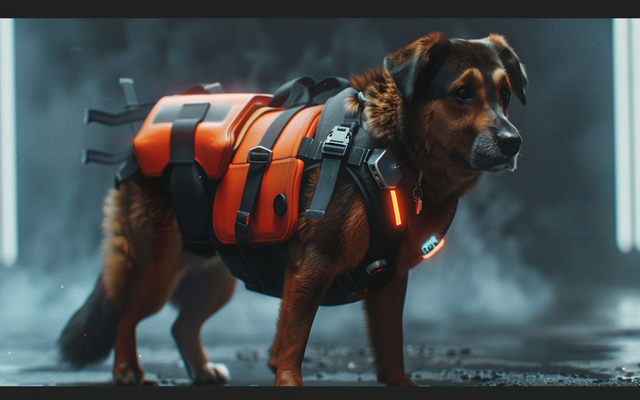
The Many Layers of Canine Diversity
- Not Just About Looks: Sure, fluffy versus short-haired matters. But true diversity goes deeper: herding instincts, trainability, problem-solving skills – dogs are brilliant in so many ways!
- Science Says They’re Special: Researchers study dog cognition, and it’s mind-blowing. Border Collies can learn hundreds of words, other breeds have a sense of fairness… Dogs are way smarter than we sometimes give them credit for.
- The Human-Dog Connection: No two bonds are the same! Some people need a goofy goofball, others a calm protector. Breed diversity means we can find that perfect fit, which is honestly kind of magical.
Conclusion
So, will dogs ever go extinct? Probably not completely. But it’s up to us to make sure we don’t lose those incredible breeds and adaptable parabreeds that make the dog world so wonderful!
FAQs
Why do some dog breeds disappear while others thrive?
Several reasons: a breed might lose its original purpose, suffer from health issues due to overbreeding, or simply fall out of popularity.
What are the most endangered dog breeds in the world?
Organizations like The Kennel Club (UK) and the American Kennel Club track endangered breeds. Some examples include the Otterhound, Cesky Terrier, and Norwegian Lundehund.
How can I help preserve rare dog breeds?
You can support breed-specific rescues, choose responsible breeders, or even consider adopting a rare breed dog yourself! Donating to conservation organizations also makes a difference.
Could dog breed revivals lead to new genetic problems?
Yes. When reviving extinct breeds, working from a small gene pool can reintroduce or even worsen existing health problems. Responsible breeding and genetic testing are crucial.
Are “designer dog” crossbreeds more likely to survive than purebreds?
Sometimes. Crossbreeds can benefit from “hybrid vigor,” reducing the risk of some inherited diseases. However, irresponsible breeding, regardless of purebred or mixed, can still lead to health and temperament issues.
If all dogs came from wolves, why can some go extinct?
Dogs evolved from wolves through selective breeding, where humans chose dogs with certain traits to breed. Over time, this led to vastly different breeds. Here’s why some disappear:
- Specialized Traits: Breeds developed for specific tasks or looks might become obsolete if needs change.
- Limited Gene Pool: Small breed populations can make them vulnerable to health problems and reduce their ability to adapt.
- External Factors: Changes in environment, disease, or even human conflict can wipe out breeds.
How does the extinction of working dog breeds impact traditional communities?
The loss of working breeds goes beyond just dogs. It can have significant impacts:
- Cultural Loss: Breeds tied to traditions and heritage disappear, harming a community’s identity.
- Practical Challenges: Losing dogs bred for tasks like herding or guarding livestock can damage a community’s livelihood.
- Emotional Impact: Working dogs are often companions and partners, their loss brings emotional distress.
Can extinct dog breed DNA be used to ‘improve’ living breeds?
Potentially, but with caution. DNA from extinct breeds could introduce lost traits or increase genetic diversity. However, important considerations include:
- Ethical Concerns: Should we alter existing breeds? Are we playing with nature too much?
- Unpredictability: We may introduce unintended problems alongside desired traits.
- Focus on the Present: Improving health and well-being within living breeds should be a priority.
Do feral dog populations play a role in preventing breed extinction?
Sometimes. Feral dogs can carry genes from older breeds or extinct lineages, acting as a reservoir of genetic diversity. However:
- Not Always Purebred: Feral dogs are often mixed, making it hard to isolate specific breed traits.
- Challenges: Studying and utilizing feral dog genetics is difficult and presents ethical dilemmas.

I’m Ashley Fowler and dogs have always been my companions from my earliest memories. Growing up, our family dog was my confidant, adventure buddy and sometimes partner in crime (sorry mom, about the chewed shoes!). That bond sparked a lifelong passion for learning about dogs – their unique personalities, their histories, and the special ways they fit into our lives. MDogsW is my way of sharing that passion and hopefully helping others experience the joy of finding their perfect puppy. When I’m not researching dog breeds, you can usually find me hiking with my trusty Beagle by my side or curled up with a cozy blanket, a cup of tea, and a stack of dog breed books.

